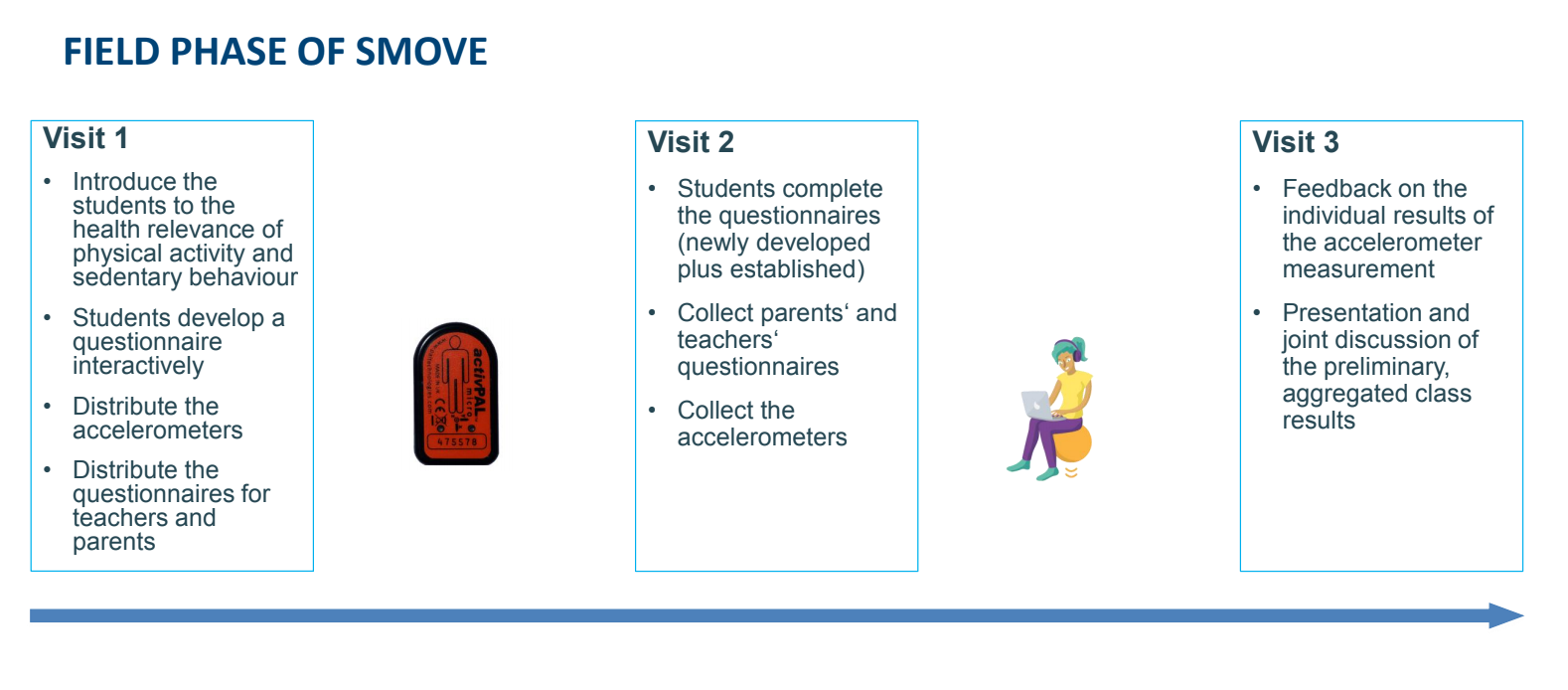How much time do school pupils spend sitting each day? And if some do sit or move more than others, which are the factors that influence this? The ORION partner Max Delbrück Center for Molecular Medicine in the Helmholtz Association (MDC) has been investigating these questions together with pupils from German schools as part of the SMOVE – Science that makes me move-project.
Funded by ORION Open Science, SMOVE is a Citizen Science project in which school pupils and scientists are working together on an epidemiological study to record physical activity and sedentary behaviour among pupils and identify the factors that influence movement and sitting time. A key objective is to raise awareness of the importance of an active lifestyle for health.
The project started in Spring 2020 and involves pupils (grades 8 and higher) from schools in Berlin and Brandenburg. At the start of the project the pupils, together with scientists, developed a questionnaire to identify potential factors that might influence physical activity and sedentary behaviour. In the second stage of the project, the pupils participated in the data collection using themselves as study subjects, in which they recorded their physical activity and sedentary behaviour. To do this, pupils wore a small measurement device (accelerometer) attached to their thighs continuously over the period of one week. Finally, pupils are now helping the scientists to analyse and interpret the data collected by their school classes.
 Due to the Corona pandemic, the project had to be halted after the first field phase in which data collection was completed by two school classes. Once schools in Berlin and Brandenburg reopened, the field phase could restart involving six school classes between September and December 2020. Unfortunately, the project had to be halted once again due to a second lockdown that ran from mid December 2020 until March 2021. During this phase, a digital solution was developed and tested by one class. By using the accelerometers, sent to them by their teachers, the pupils could continue to measure their physical activity and sedentary behaviour during lockdown. The field phase will continue remotely (digitally) or in presence, when the schools reopen, and run until June 2021.
Due to the Corona pandemic, the project had to be halted after the first field phase in which data collection was completed by two school classes. Once schools in Berlin and Brandenburg reopened, the field phase could restart involving six school classes between September and December 2020. Unfortunately, the project had to be halted once again due to a second lockdown that ran from mid December 2020 until March 2021. During this phase, a digital solution was developed and tested by one class. By using the accelerometers, sent to them by their teachers, the pupils could continue to measure their physical activity and sedentary behaviour during lockdown. The field phase will continue remotely (digitally) or in presence, when the schools reopen, and run until June 2021.
The responses from the pupils who have participated so far in the project have been very positive and the overall average participation rate of pupils in each class has been 74%.
A preliminary analysis of the data collected by 94 pupils from the first eight school classes from five high schools in Berlin has revealed that pupils spent on average 19.3 hours sitting or lying per day. However, this also included sleeping time. Responses collected through questionnaires, developed by the pupils to assess potential factors influencing physical activity and sedentary behaviour, frequently identified school-related activities, such as time spent on homework. More detailed analyses will follow.
More information
SMOVE is one of two pilot citizen science projects that are being supported by the EU ORION Open Science project to inform future health research and models for citizen science initiatives relating to life science topics.
Read more about the SMOVE project activities on the MDC website and get in touch with the project leader Dr Katharina Nimptsch by contacting the SMOVE team at MDC.
Further reading